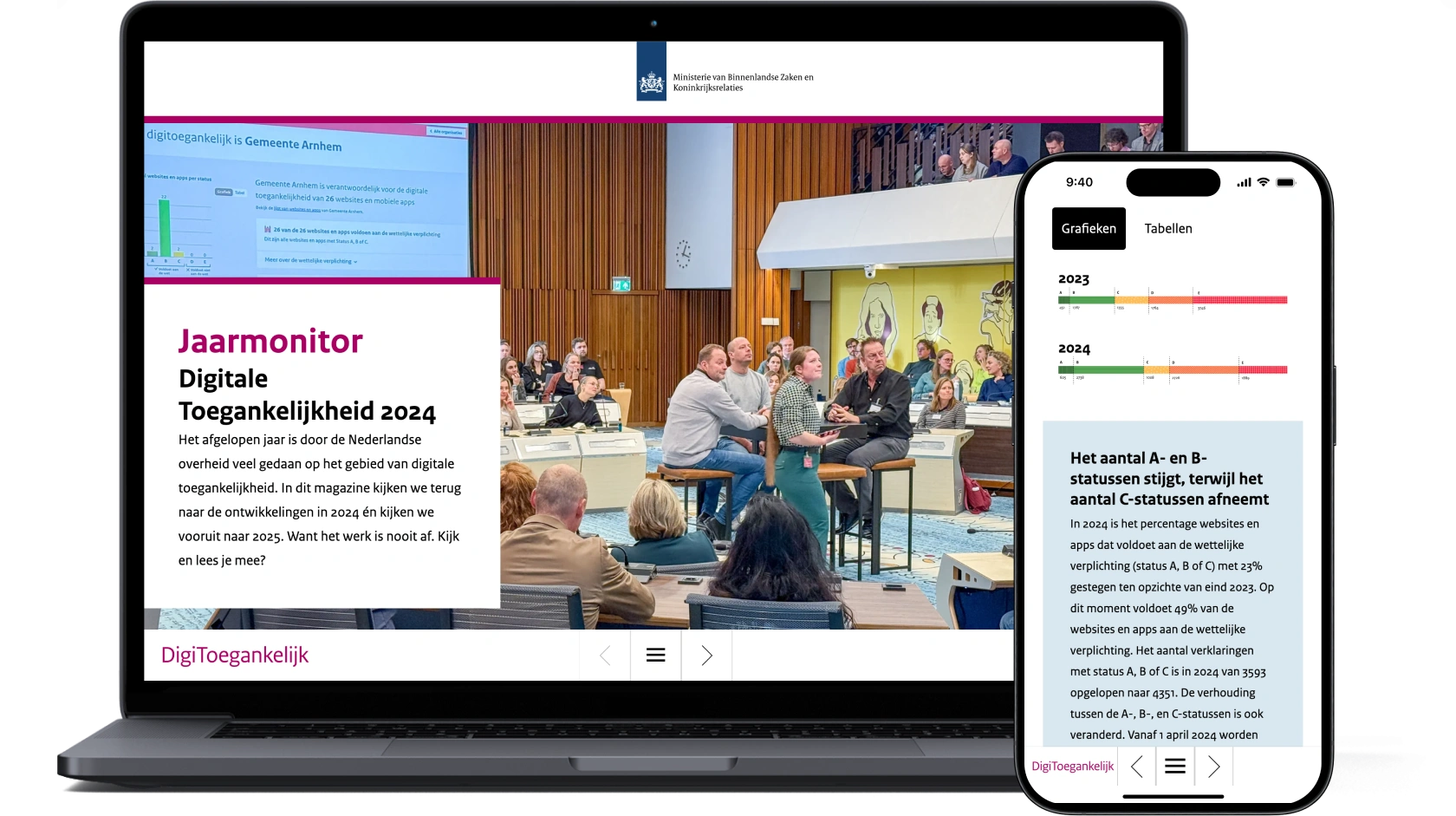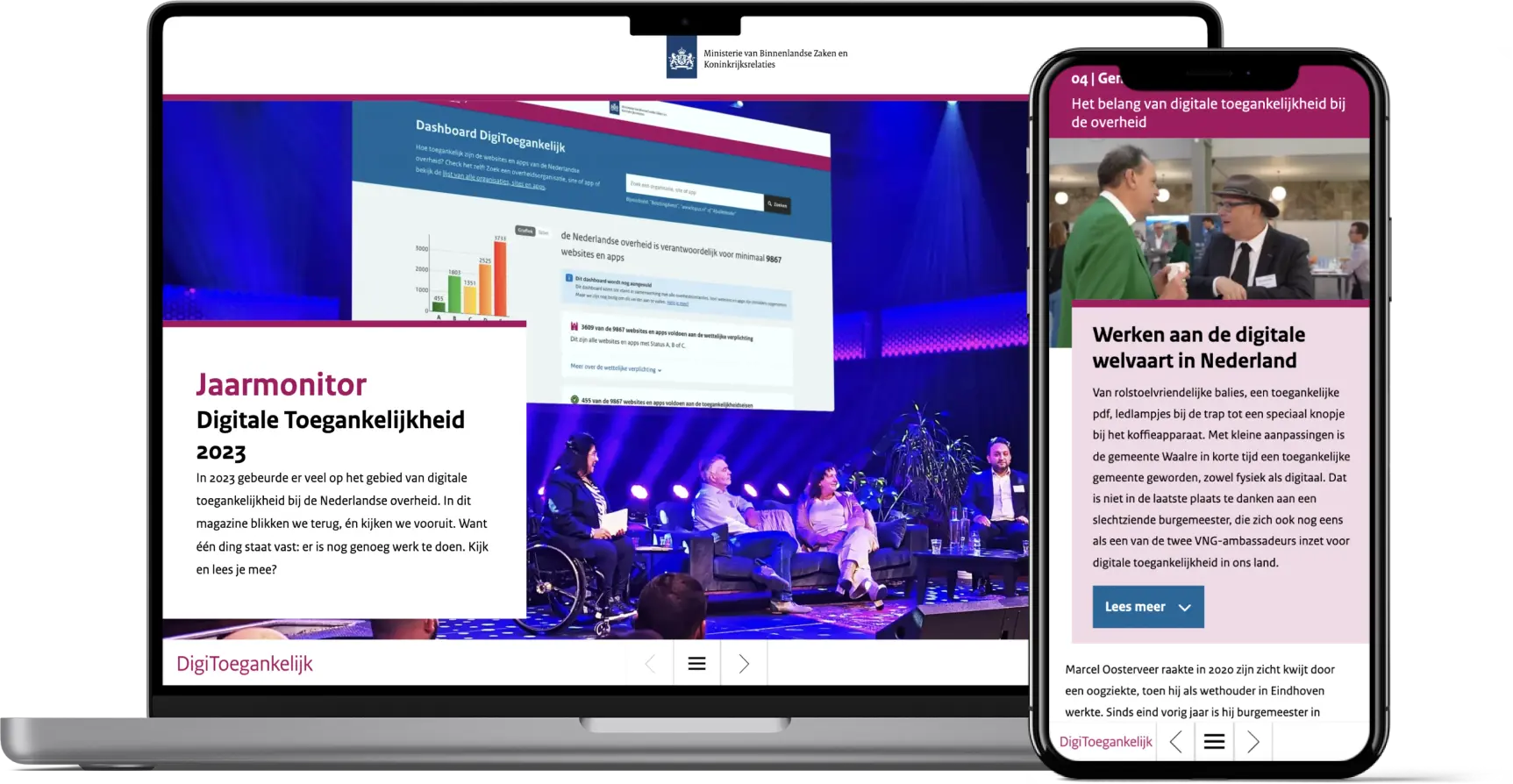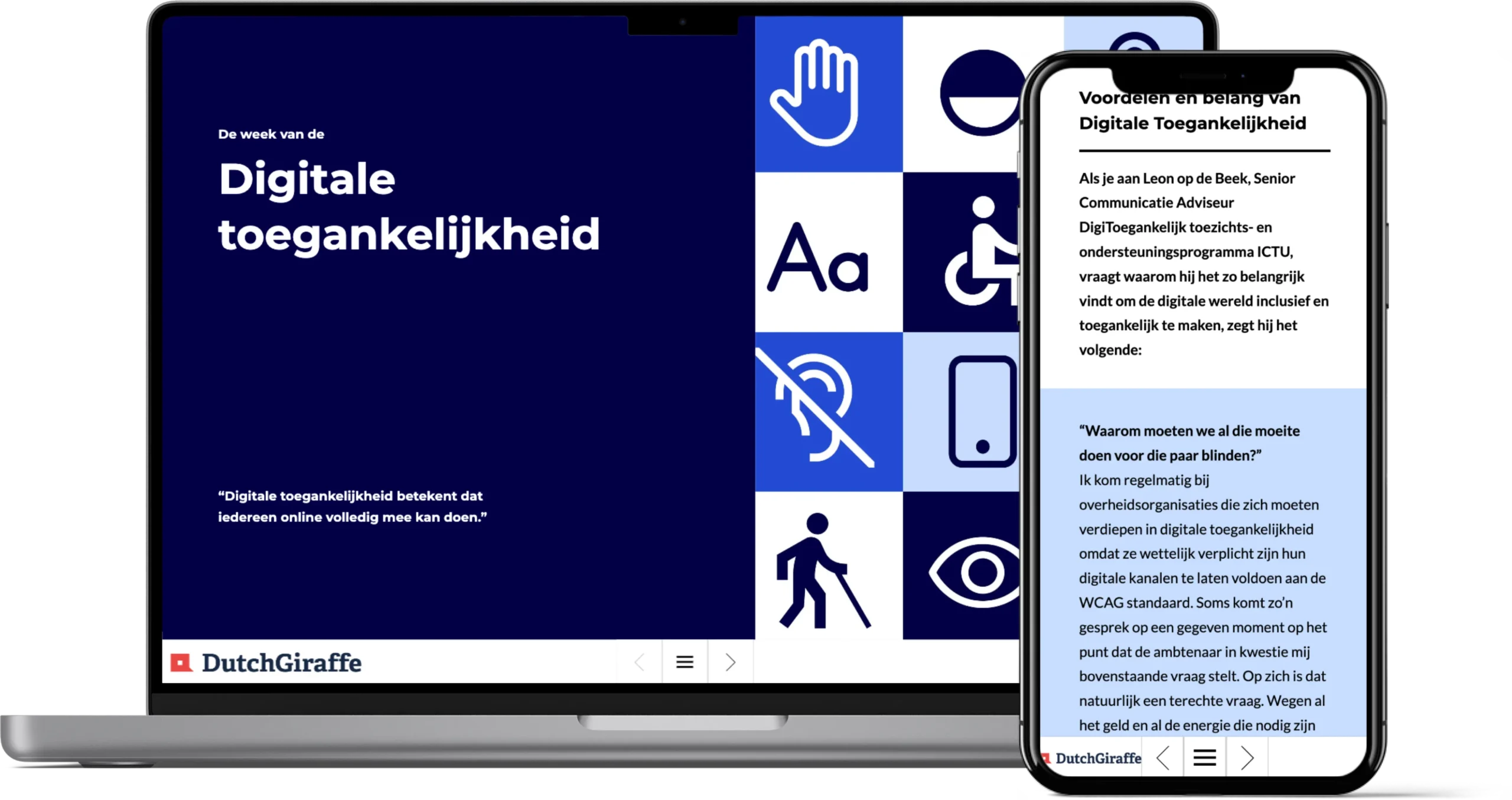Digital accessibility
Digital accessibility is about creating an online environment that is usable by everyone, including people with disabilities. Websites, apps and digital documents play an essential role in our daily lives, from communication and work to education and recreation.
On May 13, 2024, an external agency examined WPMagazines for accessibility, using the WCAG-EM evaluation method, as recommended by DigiToegankelijk (Logius). This sub-study was carried out in accordance with the European standard for accessibility requirements, EN 301 549.
Web Content Accessibility Guidelines (WCAG)
The latest version, WCAG 2.2, provides comprehensive guidelines for making digital content more user-friendly for people with visual, motor, hearing and cognitive disabilities. In addition, compliance with WCAG is in many cases legally required, allowing organizations to contribute to an inclusive digital society and meet their responsibilities.
Currently, WCAG 2.1 (levels A and AA) is still the legal standard.
What is WCAG?
WCAG (Web Content Accessibility Guidelines) is a set of guidelines that ensure that digital content is accessible to a wide range of users, including people with visual, hearing, motor and cognitive disabilities. These guidelines are based on four fundamental principles
Observable
Information must be perceptible to the senses.
Users should be able to operate the interface regardless of physical limitations.
Understandable
The content and controls must be understandable.
Robust
The content must remain functional across different technologies and platforms.
Legal obligation
In the Netherlands and the European Union, digital accessibility is a legal requirement for government organizations. This regulation is based on the European Directive on the accessibility of websites and mobile applications.
Government agencies must comply with WCAG 2.1 guidelines, which are seamlessly aligned with the new WCAG 2.2 updates.
More and more private organizations recognize the importance of digital accessibility, not only to comply with regulations, but also to demonstrate social responsibility and avoid legal risks.

Why is digital accessibility important?
Digital accessibility contributes to inclusion in society. About 15% of the world’s population has a disability, ranging from visual or motor impairments to cognitive challenges. Accessible digital content ensures that no one is excluded and that everyone can participate in digital life, regardless of their abilities.
In addition, digital accessibility improves the user experience for everyone. Websites and applications that meet accessibility guidelines are often clearer, easier to navigate and more intuitive to use.
This not only benefits people with disabilities, but also makes using digital services more enjoyable for people without disabilities.
Investing in accessibility also offers business benefits. By reaching a wider audience, including people with disabilities, organizations can expand their customer base and strengthen their reputation as an inclusive and progressive company. This can lead to a competitive advantage and greater long-term success.
Cases
Check out the examples of our digitally accessible magazines!




